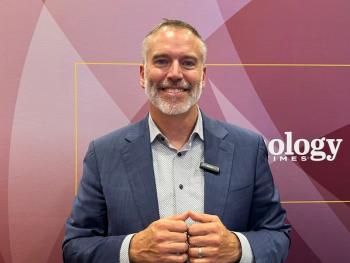
World Sight Day 2024: Patients urged to ‘Love Your Eyes’
Coordinated by the International Agency for the Prevention of Blindness under the Love Your Eyes campaign banner, World Sight Day 2024 is putting children front and center in this year’s campaign.
World Sight Day is a global day that was created to bring attention to blindness and vision impairment, shining a spotlight on the importance of vision health.
Held on the second Thursday in October, World Sight Day October 10. Coordinated by the International Agency for the Prevention of Blindness (IAPB) under the Love Your Eyes campaign banner, World Sight Day 2024 is putting children front and center in this year’s campaign.
“We all know that in children an uncorrected vision impairment can severely impact their education,” said IAPB CEO Peter Holland. “Research tells us that children with access to and being prescribed spectacles can reduce failing rates by 44%. It is knowledge like this that has led us to make World Sight Day 2024 one for children around the world.”
Members of the Ophthalmology Times Editorial Advisory Board highlighted the importance of World Sight Day to draw attention to the need for vision screening for children.
Mark Packer, MD, of Packer Research Associates, and a member of the Ophthalmology Times Editorial Advisory Board, noted that screening children for vision issues is critical.
“This year, The International Agency for the Prevention of Blindness World Sight Day focuses on children’s vision,” said Mark Packer, MD, of Packer Research Associates.
“Because of the devastating consequences of amblyopia, it is critical that young children be screened early for vision problems. Refractive error and strabismus are eminently treatable, but only if discovered early. Screening young children for eye disease is one of the most meaningful interventions in ophthalmology.”
Sharon Fekrat, MD, a Duke retinal surgeon and member of the Ophthalmology Times Editorial Advisory Board, pointed out that World Sight Day has a great impact on public awareness about the need for eye health and regular eye examinations.
“World Sight Day occurs every year and raises awareness about eye health and need for regular eye examinations through campaigns and educational programs,” Fekrat said. “Doing so improves advocacy for policies and funding for patient care and eye research and engages both governmental and non-governmental organizations.”
Fekrat also noted that World Sight Day involves the community, which stimulates conversation around eye disease and translates into proactive eye health management while decreasing associated stigma. She added that despite the conversations, there are some common misconceptions, including a belief that vision issues only affect older adults.
“Vision conditions affect people of all ages, including children, teens, and young adults,” she pointed out.
Another misconception, according to Fekrat, is that eye health is only about vision.
“Eye health also involves the prevention of systemic diseases like diabetes and hypertension, which can manifest through changes in the eyes,” she said.
Further, people also tend to believe if they don’t have symptoms, amd they don’t need an eye exam.
“Many eye conditions, such as glaucoma or an eye tumor, have no noticeable symptoms until advanced,” Fekrat said. “Regular eye examinations can identify such conditions early.”
World Sight Day addresses these issues by stressing the importance of regular eye exams, and pointing out the need for easily accessible eye care services. Early detection has been vital to some of Fekrat’s patients.
“I detected an early choroidal melanoma in a patient during a dilated eye examination and saved his life,” she recounted.
Moreover, Fekrat pointed out that diabetic retinopathy can progress to a very advanced state (that would require high risk eye surgery) without visual symptoms. She added that glaucoma may have no symptoms and once vision is lost from glaucoma, there is no way to bring it back.
“Regular eye exams allow early detection of conditions that, if untreated, could lead to vision loss or even death,” she said.
Fekrat added that the World Sight Day theme also aligns with ongoing efforts to make eye care more equitable and accessible to communities.
“Technological advances, such as telemedicine screening for treatable diabetic retinopathy or the development of biosimilar therapeutics for macular degeneration, improve access to care while decreasing cost,” she said.
Beyond World Sight Day, Fekrat noted that patients can take proactive steps to maintain good eye health and prevent vision loss
“They can make regular eye exam appointments, maintain a healthy lifestyle, wear sunglasses, enjoy fruits and vegetables,” she said, adding that no smoking campaigns can also help the cause.
Prevent Blindness and its affiliates and partners will be hosting World Sight Day education events and free vision screenings. These activities are supported by funding from Amgen, according to Jeff Todd, president and CEO of Prevent Blindness.
“World Sight Day provides a great opportunity to align with our partners all across the globe to collectively elevate discussions and bring awareness to the importance of healthy vision and the need for access to eyecare for all, especially for our children,” Todd said. “We encourage parents, professionals, lawmakers and all concerned citizens to join us for World Sight Day and make a positive difference in the lives of others through healthy eyesight.”
Newsletter
Don’t miss out—get Ophthalmology Times updates on the latest clinical advancements and expert interviews, straight to your inbox.



















































.png)


